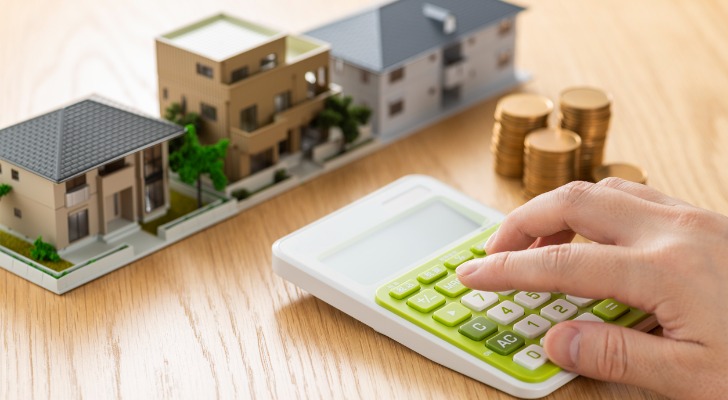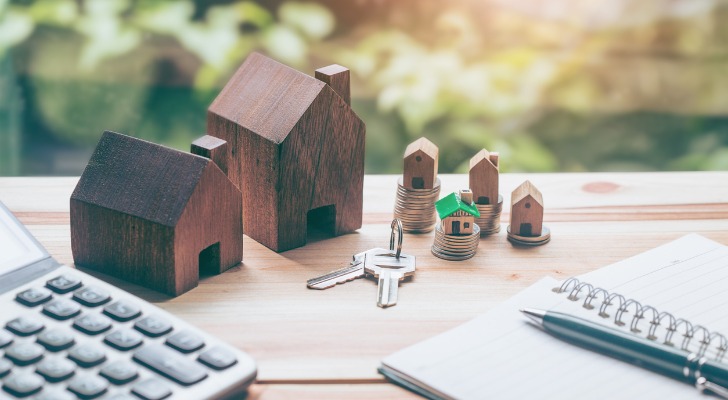
Adding investment properties to your portfolio can be a smart way to diversify while generating passive income. One of the biggest challenges, other than finding the right property to buy, is deciding how to pay for it. You might be interested in how to buy investment property with no money down if you plan to finance the purchase, but don’t want to drain your cash reserves. There are a few options that could allow you to buy real estate while spending little to nothing out of pocket. Talking to a financial advisor can help you decide where investment properties fit into your portfolio.
Understanding Down Payment Requirements for Investment Property
A down payment is usually required to purchase an investment property, as lenders want to see that you have some skin in the game. The typical range for investment property down payments is between 15% and 25% of the purchase price. Your actual down payment can depend on several things, including:
- Your credit scores
- Debt-to-income (DTI) ratio
- Property type
- Loan amount
- Loan type
Government-backed loans, including FHA and VA loans, have lower down payment requirements than conventional loans. These types of loans are an option for purchasing investment property when you’re buying a multi-unit home and plan to live in one of the units while renting the others out.
How to Buy Investment Property With No Money Down
Buying an investment property with no money down—whether you plan to rent it out or fix and flip it—means putting little to no money of your own toward the upfront purchase costs. Instead, you might choose to preserve your cash to cover renovation costs to get the home ready to rent or flip or fund maintenance and utility expenses during periods when the property is vacant.
Can you buy an investment property with no money down? Yes, and there are several ways to do it.
Option #1: Rent Out Your Current Home
If you already own a home, you might have an easy entry point into the rental market. You could rent it out while purchasing or renting another home to use as your primary residence.
Whether it makes sense to buy another home or rent can depend on your long-term goals and financial situation. If you’re planning to buy, it could make sense to explore low down payment mortgage options to minimize your out-of-pocket costs. You can skip the down payment entirely by renting another place to live, though you may need to put up some cash for the security deposit and the first month’s rent.
Option #2: Try House Hacking
House hacking involves buying a multifamily home and living in one of them while renting out the first. For example, you might buy a duplex, triplex or quadplex and live in one unit while moving tenants into the other one, two or three units.
How does that help with down payment costs? Traditionally, down payment requirements for owner-occupied properties are lower compared to other investment properties. For example, the FHA loan program has a down payment requirement of just 3.5%. VA loans, meanwhile, require no down payment at all.
Option #3: Tap Into Home Equity

If you own a home and you don’t want to rent it out, you might be able to leverage your equity instead to cover down payment costs for an investment property. Home equity is the difference between what you owe on your home and its market value or what it’s worth. There are two ways to leverage home equity to buy investment property:
- Home equity line of credit (HELOC)
- Cash-out refinancing
Depending on how much equity you have, you might be able to borrow enough for a sizable down payment. You may even be able to use your equity to purchase an investment property outright.
Option #4: BRRRR Method
Short for buy, renovate, rent, refinance, repeat, the BRRRR method is something you might consider if you’re specifically interested in purchasing a fixer-upper. With this method, you’d use a purchase-rehab loan to buy a property, renovate it, rent it out to tenants, then refinance it into a new mortgage. You’d repeat the cycle, pulling cash out each time you refinance to use toward the purchase of your next property.
This strategy can still require some cash upfront to cover the down payment, but you would get that back once you refinance. The BRRRR method may be better suited to an experienced property investor who’s interested in owning a collection of rental properties.
Option #5: Opt for Seller Financing
Seller financing could help you to sidestep a large down payment requirement if you’re able to negotiate favorite terms with the property owner. For example, say someone is selling a home they inherited from their parents. They might be willing to work out an agreement in which you make regular monthly payments to them instead of having to get a mortgage through the bank.
If you can’t find a good deal with seller financing, you could also consider a lease-purchase arrangement instead. With this type of deal, you’re renting a property to own, with part of the monthly payments going toward the home’s purchase price.
Option #6: Assume the Current Owner’s Mortgage
Assuming a mortgage allows you to take over a seller’s loan at its original terms while paying out the difference to the seller. You could potentially land a low-interest mortgage this way, without having to go through the traditional borrowing process.
You’d have to pay the seller the difference between the mortgage and the sale price, but you have some flexibility in terms of how you come up with the money. For instance, you could take out a loan or sell off assets you don’t need to raise the funds.
Keep in mind that before moving ahead with mortgage assumption, it’s important to read the fine print. If there’s a due-on-sale clause in the mortgage, then you won’t be able to take it over.
Option #7: Buy With a Co-Borrower
Maybe you’re interested in owning rental properties and you have a friend or a family member who is as well. They have the cash necessary for a down payment but lack good credit for a mortgage, which you just happen to have. You could team up to buy an investment property together, without having to put in any cash toward the down payment yourself.
That could be a win-win but remember that you’re both responsible for the debt. You’ll also have to decide how you want to handle things like property management and accounting if you plan to write off rental expenses on your taxes. Talking over the details beforehand can ensure that you’re both on the same page before buying property together.
Option #8: Consider Private Financing
Private financing means financing that doesn’t come through a traditional lender. For example, you might borrow money to buy an investment property from friends or family members. Or you might secure a hard money loan if you’re planning to buy a fix-and-flip property.
Hard-money loans are short-term loans that allow you to cover the costs of buying an investment property, often with little to no money down. The catch is that you’ll need to be able to sell the property within a fairly short time frame in order to pay the loan off.
Bottom Line

There’s no one-size-fits-all solution for how to buy investment property with no money down. Comparing the different options can help you to decide which path to follow, based on your budget, credit scores, the type of property you want to buy and your long-term financial goals.
Investing Tips
- Talking to a financial advisor can help you weigh the pros and cons of buying an investment property and whether it might be right for you. Finding a financial advisor doesn’t have to be hard. SmartAsset’s free tool matches you with up to three vetted financial advisors who serve your area, and you can have a free introductory call with your advisor matches to decide which one you feel is right for you. If you’re ready to find an advisor who can help you achieve your financial goals, get started now.
- If you’re interested in property investing but don’t want to own real estate directly, there are a few other possibilities you might consider. For instance, you could generate passive income with dividends using a real estate investment trust (REIT).
Photo credit: ©iStock.com/Paperkites, ©iStock.com/kuppa_rock, ©iStock.com/gan chaonan